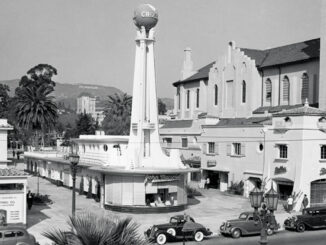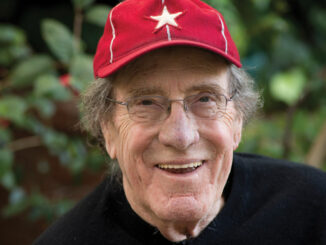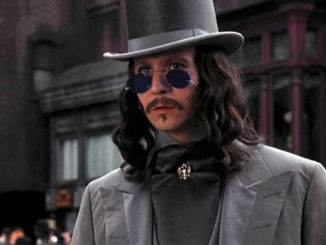
by Kevin Lewis
Camelot” is the buzzword for the presidency of John F. Kennedy, but that term was only used after his death, when his widow Jacqueline Kennedy said that the Lerner and Loewe musical was a favorite of JFK’s. The press immediately seized upon that and they made the legend. In truth, the glamorous Kennedy White House years masked the social turmoil building in America, which exploded a few years later in the face of his successor, Lyndon B. Johnson.
However, the National Aeronautics and Space Administration (NASA) program, which was planned during the Eisenhower Administration as a defense strategy during the Cold War, was perhaps the most “Camelot” aspect of the Kennedy era. The Knights of the Round Table in search of the Holy Grail were in many ways a modern metaphor for the astronauts in search of the moon. The media, especially Life magazine, shaped the outer-space enterprise as the romantic adventure saga of the century, and the United States government, reeling from the success of the Soviet Sputnik program in 1957, needed public support for the space program to finance it. It also provided a spiritual uplift for a nation whose middle-aged citizens could vividly recall two World Wars, the Depression, the Atomic Bomb and the Korean War. The space program was an emotional release — entertainment, in a way — after all that. Our astronauts represented idealism and altruism.
In April 1959, the White House gave a historic press conference to introduce seven crew-cut men, who were selected from hundreds of fighter and test pilots, as the Mercury astronauts. National adulation greeted these corporate-looking men — who were all active Army, Navy, Marines and Air Force officers — as if they were movie stars. They had done nothing yet, except exhausting testing, but the relentless invasion of privacy was worse than the preparations for space travel. They survived by remembering that they were military test pilots rather than icons.
What makes The Right Stuff one of the great films — one that celebrates an American spirit of achievement — is the zeal of the producers, director, actors, cinematographer Caleb Deschanel and post-production crew to create a documentary look with experimental techniques and editing.
Tom Wolfe, the New Journalism writer, published The Right Stuff, his best-selling, non-fiction account of this great adventure in 1979, following six years of rigorous interviews with the pioneering test pilots after World War II as well as the astronauts. After the movie of the same name based on the book was released in 1983 — 30 years ago this October — Wolfe explained that he was determined to show these complex, highly charged people in realistic, three-dimensional terms, not the bland, glossy portrayal in magazines like Life, a cause of great stress for the men themselves and their families. He also sought to bring the spotlight back on the test pilot responsible for breaking the sound barrier, Chuck Yeager. Wolfe characterized “the right stuff” as courageous initiative, grace under pressure, the constant risk of death and a bonding of purpose beyond oneself.
Film producers Robert Chartoff and Irwin Winkler were friends of Wolfe and bought the film rights to the book after it was published. They signed writer-director Philip Kaufman for the project, impressed with his film The White Dawn (1974). The Ladd Company financed and released the film, which premiered at the Kennedy Center in Washington, DC. Though The Right Stuff remains one of the great film epics — as experimental in its technique as another great film epic, Napoleon (1927) — and consistently appears as a favorite of film scholars and buffs alike, it was not successful commercially. The space program was in eclipse by 1983, and there was no idealism left in America in the Reagan years, when the art of the deal replaced “the right stuff.”
However, the film won four Academy Awards, including all three post-production honors, but lost the major awards to the weepie Terms of Endearment (1983), including the only acting nomination, Sam Shepherd as Yeager. The Right Stuff won Best Film Editing for Glenn Farr, Lisa Fruchtman, Stephen A. Rotter, Tom Rolf, A.C.E., and Douglas Stewart; Best Sound Effects Editing for Jay Boekelheide; Best Sound for Mark Berger, CAS, Thomas Scott, Randy Thom, CAS, and David MacMillan, CAS; and Best Music (Original Score) for Bill Conti. It was also nominated for the American Cinema Editors’ Eddie Award and won the Motion Picture Sound Editors’ Golden Reel Award for Best Sound Editing – ADR.
Deschanel’s cinematography is among the most distinguished in the history of the medium. Working with NASA archival film footage of the tests, the historic press conference and the victory parades, he matched the immediacy and arbitrary lighting of the actual documentaries with a lush Hollywood look without sacrificing fidelity and realism.
What makes The Right Stuff one of the great films — one that celebrates an American spirit of achievement — is the zeal of the producers, director, actors, cinematographer Caleb Deschanel and post-production crew to create a documentary look with experimental techniques and editing. In the Warner Bros. two-DVD release of the film, the creators show how they banded together themselves to create an original, unique art film for commercial release. In 193 minutes, the movie never loses its mesmerizing quality.
Chartoff, Winkler and Kaufman cast mostly unknowns as the seven astronauts and their wives. The casting was age-appropriate for the characters. Even President Johnson was played by a distinguished theatrical character actor, Donald Moffatt. Shepard was a premier playwright but not an actor when he was cast as Yeager. In the years since the film’s release, only Dennis Quaid, who portrayed Gordon Cooper, and Ed Harris, who played John Glenn, became bona fide film stars. The others included Scott Glenn as Alan Shepard, Fred Ward as Gus Grissom, Scott Paulin as Deke Slayton, Charles Frank as Scott Carpenter and Lance Henriksen as Wally Schirra. Because of this, the film has never become dated. Kaufman, who has always explored the natural sexuality of his characters, uses this lack of star power to create an acting style that captures the body language of these very physical men.
Kaufman, who was not Oscar-nominated as director or writer, has consistently written and directed films that explore the complex psychological patterns of his characters. Though the film has a visceral, sensuous quality, there are no sex scenes, no melodramatics and no clichéd domestic situations. When the producers were skeptical that Shepard did not have the acting experience to carry dialogue-laden scenes, Kaufman edited the dialogue scenes and shaped the role in physical imagery. Shepard was juxtaposed against the desert landscape and the X-1 to evoke a Gary Cooper iconic quality.
In interviews on the DVD, it is revealed that Kaufman advised his film editors to cut the film with a kinetic energy that is exhilarating. Special effects supervisor Gary Gutierrez discusses Kaufman’s instructions to avoid the pristine, stop-motion technique and to use a guerrilla approach to effects instead. Kaufman also hired the experimental filmmaker Jordan Belson to create the images of outer space. Certainly the celestial streams that whiz past the spacecraft and tantalize Glenn are among the greatest images in film history.
Deschanel’s cinematography is among the most distinguished in the history of the medium. Working with NASA archival film footage of the tests, the historic press conference and the victory parades, he matched the immediacy and arbitrary lighting of the actual documentaries with a lush Hollywood look without sacrificing fidelity and realism. For the press conference, old 1959 television lighting equipment was resurrected and used for the shoot.
Since it became eligible 19 years ago, The Right Stuff has been bypassed continuously for inclusion in the Library of Congress’ National Film Registry — an inconceivable and ironic oversight. If ever a film had “the right stuff” to make that list, it is this masterpiece. Maybe this year, the National Film Preservation Board will do the right thing.





